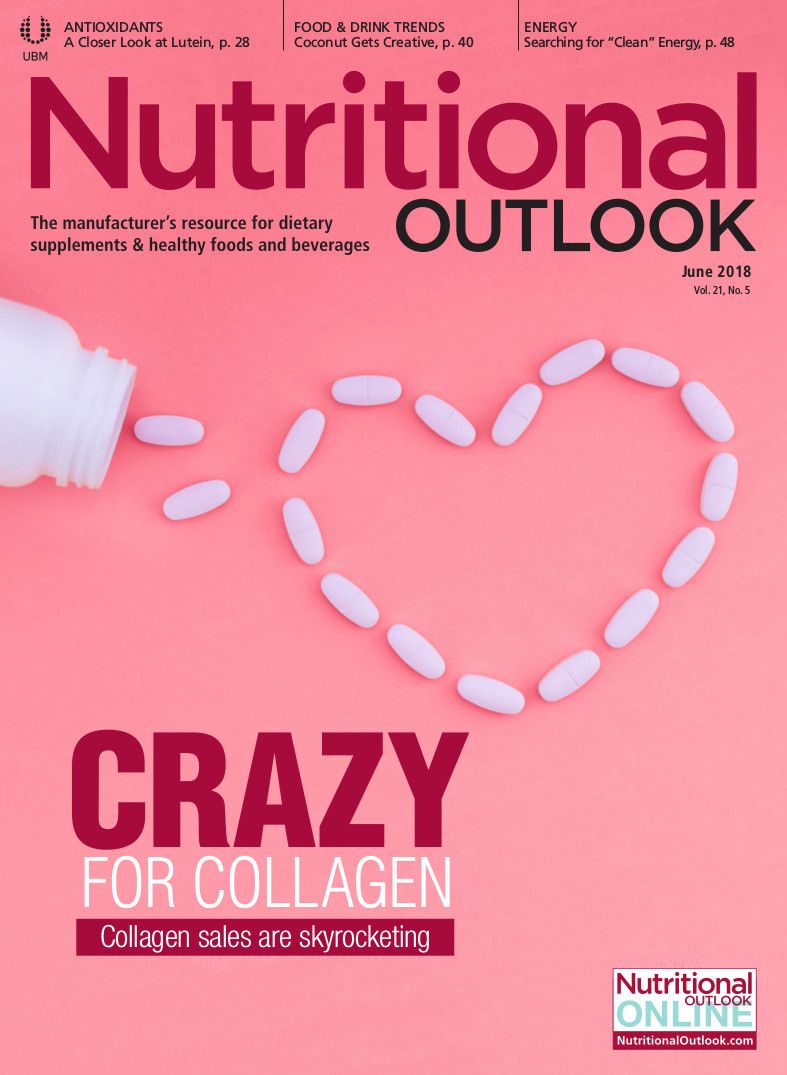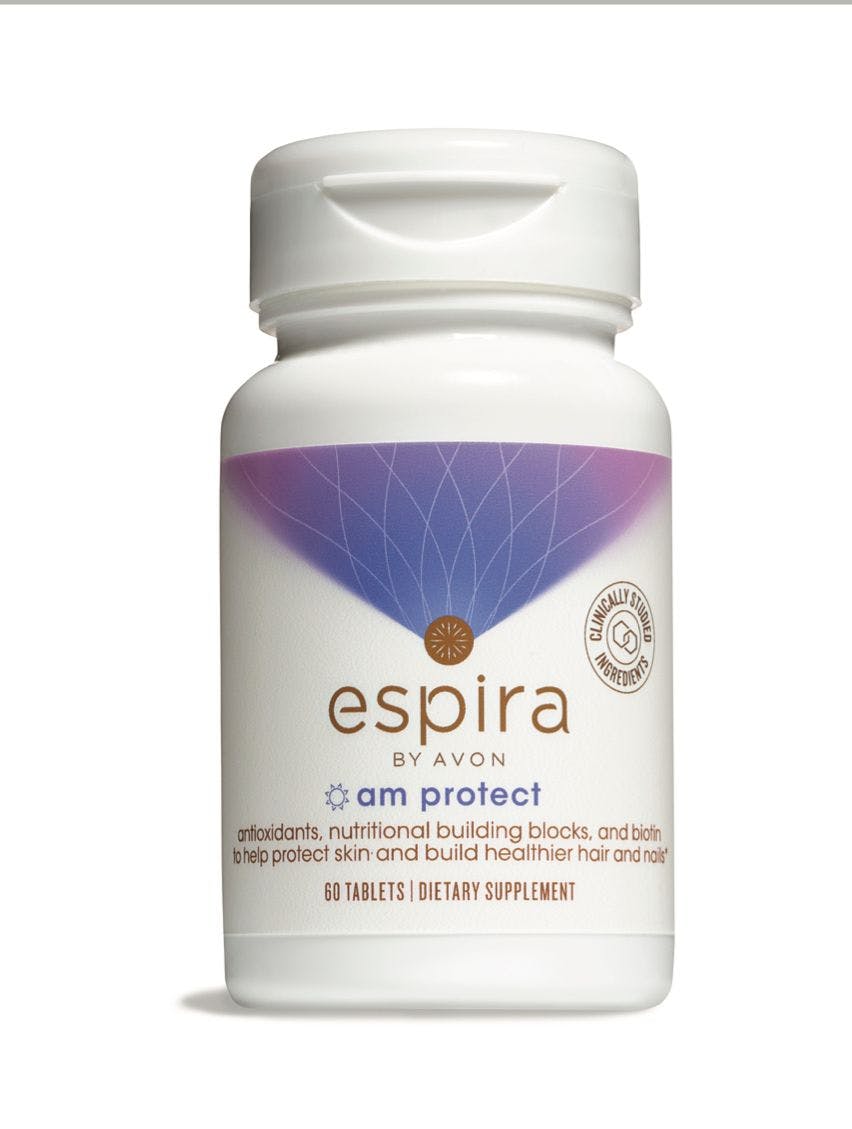Collagen Product Sales Are Skyrocketing, from Supplements to Food
Collagen foods and beverages are expanding the ingredient’s fan base.
Photo © Shutterstock.com/Bodnar Taras

From the looks of things, the health and wellness industry is having no trouble convincing Americans to take their collagen. Sales of supplements touting the structural protein as a primary functional ingredient were up an astounding 33.8% in the U.S., hitting $46.6 million, in the 52 weeks ending February 25, 2018, per research from SPINS LLC (Chicago).
So it makes sense that Google Trends tracked an all-time high in consumer awareness of and interest in collagen this year. And it makes sense, as well, that the ingredient was the talk of recent trade shows, with booths at March’s Natural Products Expo West in Anaheim, CA, overflowing with collagen powders, teas, bars, and even baked goods.
And that underscores yet another development that could elevate collagen even further: that while dietary supplements and topical beauty products have traditionally been the protein’s home, foods and drinks are emerging as novel platforms for launching collagen to an even wider audience.
This indicates that many product developers feel like Annie Vo, R&D specialist, Vinh Wellness (Tustin, CA), does: that “collagen is on the verge of going mainstream as a bona fide food and beverage ingredient. It may currently be present in a small number of product categories, but its proven health benefits and ease of formulation will propel it into the spotlight.”
Branching Out
Until now, when American consumers thought of collagen-if they thought of it at all-it was usually in the context of cosmeceuticals, nutricosmetics, and beauty. But lately, says Lauren Clardy, president, NutriMarketing Group (Santa Rosa, CA), “Collagen has moved well beyond the beauty-from-within category and now has traction in the joint, bone and muscle support, sports, and digestive health markets. Brands in multiple channels are segmenting into these specific targeted end points.”
Clardy sees the evolution as a consequence of the category’s maturation, and a sign that the protein is “moving more toward the footprint that you see in the Asian market,” where collagen-containing supplements, topicals, and foods and beverages aimed at skin, hair, and nail support have long been commonplace.
As we learn more about collagen’s role in mobility maintenance and athletic performance, more consumers-and from a broader range of age groups and need states-are also turning to the protein. “In the coming year,” says Juliana Erickson, senior marketing manager, Lonza (Basel, Switzerland), “we anticipate that manufacturers will continue to account for a diverse demographic when developing joint-health products. And while it’s been traditionally seen as a market for the aging population, there’s a growing need for collagen ingredients and dosage forms to address the needs of younger active consumers.”
Breaking Down the Building Blocks
Another collagen driver: protein supplementation. For years, consumers and formulators dismissed collagen as a protein source because, lacking the amino acid tryptophan, it ranked as nutritionally “incomplete.” But given its presence-and prevalence-in everything from connective tissue and blood vessels to skin, intestinal walls, and the cornea, collagen, which accounts for roughly 30% of the body’s protein content, must not be all that shabby vis-Ã -vis our physiological needs.
And yet collagen achieves its physiological effects in a manner somewhat different from how other nutrients work. Whereas a compound like the long-chain omega-3 fatty acid docosahexaenoic acid (DHA) might go from a fish oil supplement through the digestive tract, into the bloodstream, and, ultimately, to its target tissues in, say, neural cell membranes, collagen-in its typical supplementary form-enters the system as a short peptide fragment rather than the full-length protein. When cellular receptors primed to detect the complete protein intercept these shorter fragments, they get the message that the body’s collagen is being broken down, and that it has to ramp up production to make more.
In other words, collagen supplementation doesn’t supply the building blocks for collagen regeneration, per se, but rather provides the body with an incentive for doing so. It’s a sneaky mechanism of action, but an ingenious one, nonetheless.
Prioritizing Protein
So while collagen sales in performance nutrition “began picking up speed in 2016,” notes Kimberly Kawa, SPINS’s retail reporting analyst, “a major shift in marketing collagen as a protein source changed the direction of growth in favor of the protein supplements and meal replacements category.”
Once again, that slight shift in positioning is roping in a larger consumer base for collagen, chiefly by tilting the functionality focus away from serious athletic and competitive performance to “a more general health-and-wellness protein boost,” Kawa says. Over the 52 weeks ending February, 25, 2018, in fact, sales of collagen products targeting the protein-supplementing crowd grew by 751%, earning the category $8.7 million in said sales.
Indeed, observes Vo, “The increasing need for proteins that are easy not only to digest but to absorb, that nourish the aging human body, and that are also pure and sustainable is the driving force for this trend. With solid scientific research proving its health benefits, and with ingredient technologies allowing for its easy breakdown and absorption, collagen has become the perfect choice to meet this need.”
Eat It
Edible and drinkable applications are becoming the perfect vehicles for delivering collagen. As Heather Arment, marketing coordinator, North America, Gelita (Sergeant Bluff, IA), notes, “While collagen has been successfully used for years in topical beauty and personal care products such as lotions, face creams, and more, recent scientific evidence confirms that the highest efficacy can be achieved when collagen is ingested orally. This has created new opportunities for beverage, food, and supplement manufacturers.”
Yet because typical dose loads run from the roughly 2.5 g/day of type I collagen needed to see dermatologic results to the 7- to 10-g/day doses of type II collagen shown to promote joint improvement, any supplementary pill or capsule big enough to carry that much collagen would be a tough one to swallow, literally.
“That’s why it lends itself so brilliantly to delivery and packaging technologies such as RTD beverages, shots, jellies, chocolate chews, and more,” Clardy says. “We’ll see collagen in mainstream functional foods such as protein chips and snacks, bars, confections of various types, and beverages where it’s featured prominently and the brand value proposition will be centered on collagen.”
To Market, to Market
In fact, we’re already seeing it. And according to Nan Callan-Zamora, public relations and communications manager, Twinlab Consolidation Corp. (Boca Raton, FL), the reason is twofold.
First, as an odorless, tasteless powder that dissolves readily, remains stable in solution, and tolerates a range of processing temperatures, storage conditions, and formulation environments, “Collagen ingredients are easily incorporated into these different forms,” Callan-Zamora says.
And second, “Brands want to provide trendy ways to ensure consumer compliance,” she notes. So it should come as no wonder that the number of products in the grocery category featuring collagen as a functional ingredient skyrocketed 430.3% over the 52 weeks ending February 25, 2018, bringing the department $2.3 million in sales, SPINS says.
Such products include Reserveage’s (Boca Raton, FL) Collagen Replenish and FibeHer powders, its BeauTea, and its collagen chews and beauty shots. The products, which Twinlab distributes, contain Gelita’s Verisol brand of collagen peptides, Callan-Zamora says, and a placebo-controlled clinical study1 shows that women aged 24 to 50 with moderate cellulite who received 2.5 g of the peptides during the six-month study period saw a statistically significant decrease in the degree of cellulite and skin waviness on their thighs, as well as a significant improvement in dermal density, relative to subjects taking the placebo. “This is a truly novel application for collagen,” notes Callan-Zamora, “or, in this case, Verisol collagen peptide.”
Another novel collagen application is the meat bar, which checks two big boxes on contemporary consumers’ grocery lists: protein bars and meat snacks. As Eugene Kang, CEO and cofounder, Country Archer Jerky Co. (San Bernardino, CA), points out, “Protein bars are projected to grow 8% from now until 2021, according to a 2017 Technavio report. And the meat snacks category has had incredible momentum, reaching $2.8 billion.”
So using collagen to add more protein to a snackable meat bar “seemed like a natural fit,” Kang continues. Available in cayenne beef, sweet BBQ pork, and herb-citrus turkey varieties, each 42-g bar contains 15 g of protein, 4 g of which come from collagen peptides. The meat itself is extra-lean grass-fed beef, uncured bacon, or cage-free turkey raised without antibiotics or hormones, and all other ingredients are suitably “natural” to meet prevailing consumer standards. Thus, says Kang, “We’re tapping into multiple segments while still appealing to the growing number of clean eaters and special dieters following Whole30, Paleo, and Ketogenic.”
Staying in the bar aisle, NeoCell (Irvine, CA) introduced a pair of vastly more dessert-like collagen cookie bars in coconut chocolate chunk and peanut butter crunch flavors at this spring’s Expo West. Each 45-g bar contains 12 g of protein, including some from grass-fed collagen, along with other all-natural ingredients. The company also debuted a raspberry lemon flavor of its Super Collagen Powder that adds a new twist to the unflavored powder the company launched in 1998.
And don’t forget bone broth, adds Lisette Van Lith, global director of the Peptan brand from Rousselot (Son, Netherlands). “Collagen-rich foods in the form of bone broth, commonly used in all regions of China due to its overall health benefits, have also seen growing popularity in the U.S.,” she notes. “In fact, bone broth has become one of the key drivers for collagen sales in the U.S. market, with retail sales tripling to $19.7 million in 20162.”
For her part, Clardy is bullish on collagen-boosted coffee creamers, like Vital Proteins’ (Elk Grove Village, IL) line of coconut-milk–based Collagen Creamers, and she expects to see collagen-containing yogurts and puddings, dairy-based and otherwise, “hitting shelves in the near future.” As a mainstream food and beverage ingredient, Clardy concludes, collagen may “still have a long way to go. But there’s a bright future ahead for the collagen market.”
Also read:
References:
- Schunck M et al. “Dietary supplementation with specifc collagen peptides has a body mass index-dependent benefcial efect on cellulite morphology.” Journal of Medicinal Food, vol. 18, no. 12 (December 2015): 1340-1348
- Troitino C. “Ancient Nutrition Raises $103 Million from 100+ Investors to Heat the Bone Broth Market.” Forbes (March 10, 2018)

Prinova acquires Aplinova to further increase its footprint in Latin America
April 7th 2025Prinova has recently announced the acquisition of Brazilian ingredients distributor Aplinova, which is a provider of specialty ingredients for a range of market segments that include food, beverage, supplements, and personal care.





















